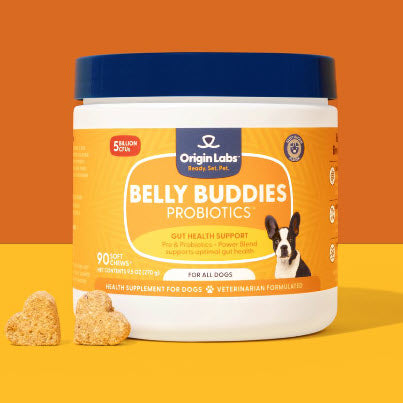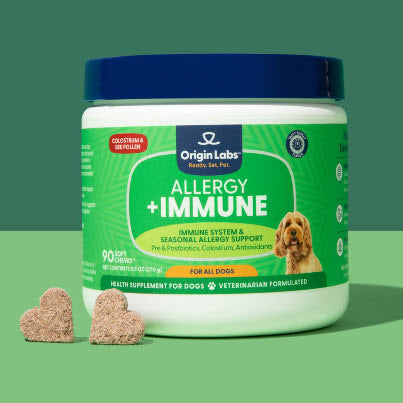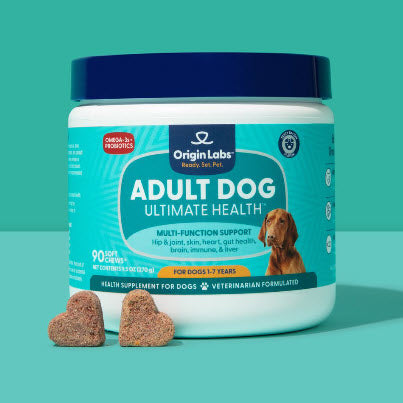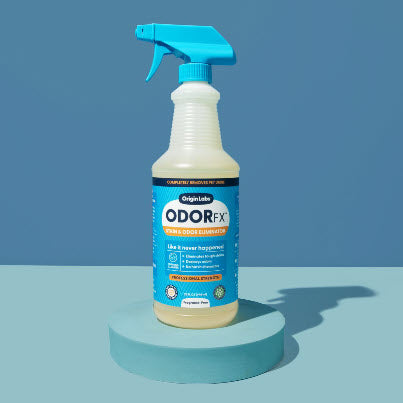Introduction to Enzymatic Cleaners
Any cat owner knows the frustration that comes with discovering a spot where their feline friend has decided to relieve themselves. The scent of cat pee is notoriously difficult to eradicate, and the stains can be just as stubborn. Traditional cleaning methods often fall short in dealing with pet urine stains and the pungent cat pee odors that linger long after the initial accident.
Enter enzymatic cleaners, a game-changing solution that promises not only to mask but to completely eliminate these challenging stains and odors. Unlike conventional cleaners, enzymatic solutions tackle the root cause of pet urine smells by breaking down the complex organic compounds found in cat urine. This method doesn't just cover up the odor; it neutralizes it.
The unique formula of enzymatic cleaners turns what was once a daunting task into a manageable one, transforming your cleaning strategy:
- Attack at the Source: Instead of merely hiding the odor, enzymes go to work on the urine molecules themselves.
- Safety First: These cleaners are safe for use around both humans and pets, making them a conscientious choice for health-conscious households.
- Environmentally Friendly: Being biodegradable, they don't contribute harmful chemicals to your home or the environment.
This introduction to enzymatic cleaners sets the stage for understanding their distinct advantages and practical applications in combating cat pee challenges effectively.
How Do Enzymatic Cleaners Work on Cat Urine?
Cat urine enzyme cleaner technology harnesses a potent combination of natural bacteria and enzymes to tackle the stubborn stains and pungent odors left by feline accidents. Understanding the underlying science reveals why these cleaners are particularly adept at confronting the unique challenges posed by cat urine.
The Science Behind Enzymatic Cleaners for Cat Urine Stains and Odors
Organic Compounds in Cat Urine
Cat urine contains various organic compounds that contribute to its strong smell and staining properties:
- Proteins
- Urea
- Creatinine
- Pheromones
- Uric acid
These compounds are responsible for the unpleasant odor that lingers even after cleaning with regular household cleaners.
How Enzymatic Cleaners Work
Enzymatic cleaners use a combination of enzymes and bacteria to break down the organic compounds in cat urine and eliminate both the stain and odor. Here's how it happens:
- Enzymes: Enzymes are biological catalysts that speed up chemical reactions. Different types of enzymes target specific components in cat urine:
- Protease: Breaks down protein-based compounds.
- Urease: Converts urea into ammonia and carbon dioxide.
- Amylase: Targets starches.
- Lipase: Works on fats that may be present in soiled areas.
- Bacteria: Non-pathogenic bacteria are also present in enzymatic cleaners. These bacteria feed on the smaller components produced by the enzymes, multiplying as they consume them.
- Chemical Reactions: The interaction between enzymes, bacteria, and cat urine leads to chemical reactions that ensure complete odor elimination:
- Breakdown: Enzymes split complex molecules into smaller pieces that bacteria can easily consume.
- Digestion: Bacteria digest these smaller pieces, further reducing them into simple, non-odorous compounds like water and carbon dioxide.
- Neutralization: The final result is the neutralization of the odor as well as the removal of stain-causing components.
This process not only removes the surface-level stain but also penetrates deep into carpets or upholstery fibers, eliminating odor-causing molecules from within.
Advantages of Enzymatic Cleaners
Enzymatic cleaners offer several advantages over traditional methods when it comes to dealing with cat urine stains and odors:
- Effective: By targeting cat urine at its chemical core, enzymatic cleaners completely eradicate odors instead of just masking them.
- Deep Cleaning: The combination of enzymes and bacteria ensures thorough cleaning by reaching hidden sources of odor within carpets or furniture.
- Safe for Pets: Enzymatic cleaners are typically safe for use around pets, as they don't contain harsh chemicals that may be harmful to cats or dogs.
- Environmentally Friendly: Many enzymatic cleaners are biodegradable and eco-friendly, making them a greener choice for cleaning up after pets.
By harnessing the power of nature-inspired ingredients and processes, enzymatic cleaners provide a reliable and efficient solution for dealing with cat urine stains and odors.
The Advantages of Using Enzymatic Cleaners for Cat Urine Stains and Odors
When faced with the daunting task of removing cat urine stains and odors, pet owners have found a powerful ally in enzymatic cleaners. These bioactive odor removers stand out from traditional cleaning solutions, offering several compelling benefits:
Targeted Action: Bio-Enzymatic Formula
Unlike conventional cleaners that mask odors, enzymatic cleaners use specific enzymes to dismantle the uric acid crystals and other components of cat urine at a molecular level. This action not only removes the stain but also neutralizes the source of the odor.
Safety Profile: Non-Toxic Ingredients
Composed of natural bacteria and enzymes, these products are non-toxic and safe for use around both humans and pets. They do not contain harsh chemicals that can harm respiratory health or cause skin irritations.
Environmental Impact: Eco-Friendly
Given their biodegradable nature, enzymatic cleaners are an eco-conscious choice. They break down into harmless substances after doing their job, reducing environmental pollution.
Efficacy on Stubborn Stains: Deep Cleaning
Enzymatic cleaners penetrate deeply into fabrics and porous surfaces where pet stains may linger, ensuring thorough cleaning beyond what's visible to the eye.
Discouraging Repeat Marking: Preventing Recurrence
By completely eliminating the odor, these cleaners help deter pets from remarking areas they've soiled before. Cats are less likely to return to a spot if they can't smell their previous scent there.
Versatility: Broad-Spectrum Use
These cleaners work effectively on a variety of surfaces including carpets, hardwood floors, and upholstery, making them versatile tools in a pet owner's arsenal.
Cost-Effectiveness: Concentration
Because enzymatic cleaners are highly concentrated, less product is needed compared to traditional cleaners. This makes them more economical over time as they last longer.
Pet owners seeking an effective odor remover for cat urine find that enzymatic cleaners offer comprehensive solutions that traditional stain removers simply can't match. Their prowess in dealing with pet stains paves the way for a cleaner, fresher home environment without compromising safety or sustainability.
By understanding these advantages, it becomes clear why enzymatic solutions have become a preferred choice for tackling pet-related cleanliness challenges. Moving forward, knowing how to select and apply these products will further enhance their effectiveness in maintaining a hygienic and pleasant living space.
Considerations for Choosing the Best Enzymatic Cleaner for Cat Pee
Selecting the ideal enzyme cleaner for cat urine is more than just picking the first product you see on a shelf. There are several factors you need to take into account to ensure that your choice is not only effective but also safe for your furry friend.
1. Specific Formulation for Cat Urine
Not all enzymatic cleaners are created equal. Some are formulated specifically to tackle dog urine, while others are designed to combat various types of organic stains and odors, from food spills to blood stains. For best results, look for an enzymatic cleaner that mentions 'cat urine' directly on the label. These products are typically more potent in breaking down urea and uric acid - the primary components of cat pee that give it its stubborn stain and foul odor.
2. Non-Toxic Ingredients
Safety is paramount when choosing any cleaning product for your home, especially if you have children or pets. Opt for an enzymatic cleaner that is non-toxic and free from harsh chemicals. A pet-friendly pet odor eliminator ensures your feline friend won't be exposed to harmful substances, reducing the risk of allergic reactions or other health issues.
3. Scent
While eliminating the unpleasant smell of cat pee is vital, replacing it with an overpowering perfume isn't ideal either. Choose an enzyme cleaner with a mild scent or no scent at all - this way, you're not merely masking the odor but completely eradicating it.
4. Versatility
An excellent enzymatic cleaner should work effectively on varying surfaces such as carpets, hardwood floors, upholstery, and even clothing. Always check whether the cleaner can be safely used on different materials without causing discoloration or damage.
5. Concentration and Value for Money
Finally, consider the concentration of the cleaner. Highly concentrated products can offer better value for money as they can be diluted according to the severity of the stain or odor, lasting for a more extended period.
Keeping these factors in mind will undoubtedly aid in selecting the most suitable enzymatic cleaner for cat urine specifically tailored to your needs.
Proper Application Techniques: Using Enzymatic Cleaners Effectively on Different Surfaces Affected by Cat Urine
Enzymatic cleaners are a boon for pet owners, acting as both a stain remover and odor eliminator. Their versatility makes them suitable for a range of surfaces; however, each surface may require a slightly different approach to maximize efficacy.
Suitable Surfaces for Applying Enzymatic Cleaners on Cat Urine Stains
When faced with cat urine, the following surfaces can be treated with enzymatic cleaning products:
- Carpets
- Hardwood floors
- Upholstery
- Tile and grout
- Concrete
It's important to ensure the cleaner is appropriate for the surface in question. Always refer to the manufacturer's instructions before application.
Comprehensive Guide on Using Enzymatic Cleaners Effectively
To ensure optimal results, it's essential to understand how to apply enzymatic cleaners correctly on different surfaces. This guide provides a step-by-step procedure for using these cleaners on carpets, hardwood floors, and upholstery.
How to Use Enzymatic Cleaners on Carpets:
- Absorb Excess Urine Immediately: If you catch the stain while it's fresh, use absorbent paper towels or a clean, dry cloth to soak up as much urine as possible. This first step is crucial in reducing the severity of the stain and odor.
- Generously Apply the Cleaner: Saturate the stained area with your chosen enzymatic cleaner to reach deep into the carpet fibers where cat urine can linger. Remember, the cleaner must come into contact with all of the urine in order to be effective.
- Allow Ample Time for the Cleaner to Work: Let the cleaner sit for at least 10-15 minutes, or follow the specific time recommended by the product instructions. The enzymes need time to break down the organic compounds in cat urine.
- Blot Away Excess Moisture: Using a clean, dry towel, blot up any excess cleaner from your carpet. Avoid rubbing or scrubbing as this could spread the stain.
- Air Dry Completely: Let your carpet air dry thoroughly before walking on it again. Avoid using heat for drying as it can cause odors and stains to set into the carpet fibers.
How to Use Enzymatic Cleaners on Hardwood Floors:
- Promptly Remove Urine: If you spot fresh cat urine on your hardwood floor, use a soft cloth to immediately wipe it up. Quick action helps prevent absorption into wood grains which can lead to long-term damage.
- Gently Apply Enzymatic Cleaner: Using a soft mop or cloth, gently spread the enzymatic cleaner over the stained area. Be careful not to soak the wood to avoid causing water damage.
- Wait and Wipe Method: After waiting for about 5-10 minutes, wipe off the cleaner with a damp cloth. Always follow the grain of the wood to minimize potential scratches.
- Ensure Complete Drying: It's absolutely crucial to dry your hardwood floor thoroughly after cleaning to prevent water damage or warping.
How to Use Enzymatic Cleaners on Upholstery:
- Blot Fresh Stains Immediately: If you notice a fresh stain on your upholstery, blot it quickly with paper towels. Avoid rubbing or scrubbing to prevent pushing urine deeper into fabrics.
- Perform a Patch Test First: Before applying the cleaner all over, test it on an inconspicuous area of your upholstery for colorfastness. This helps ensure that the product won't discolor your fabric.
- Spray Cleaner Evenly: Mist the affected area lightly with the enzymatic cleaner. Be careful not to oversaturate your fabric, especially if you can't remove cushions or covers for drying.
- Patience is Key: Allow the cleaner to sit according to product instructions—usually around 15 minutes—before blotting away any residual moisture.
- Air Out Completely: Let your upholstery air dry fully after cleaning. If possible, place it in sunlight as UV rays can aid in further breaking down odor-causing compounds.
By meticulously following these steps designed for each surface type, you can maximize the effectiveness of enzymatic cleaners and maintain high levels of cleanliness and hygiene in your home, even in the face of stubborn cat urine odors and stains.
Removing Lingering Odors and Preventing Future Incidents
Dealing with old pet messes can be a daunting task due to the stubborn odors that linger even after thorough cleaning. Enzymatic cleaners present an effective solution for these persistent smells. Owing to their ability to break down the organic compounds in cat urine, they can eliminate odors from deep within surfaces.
1. Removing Lingering Odors
For tackling lingering odors, start by identifying all areas where your cat has urinated. A black light can be particularly useful for this task, as it will make urine stains glow in the dark. Once located, apply the enzymatic cleaner generously and allow it to sit for the recommended duration on the product label. This period allows the enzymes to break down the urine components thoroughly. You may also need to repeat this process for older or more stubborn stains.
2. Preventing Future Incidents
To prevent future incidents, a multi-pronged approach is suggested:
- Environmental Modifications: Make changes in your home that discourage inappropriate elimination. For instance, cats usually dislike soiling their eating or sleeping areas, so consider placing food bowls or beds in spots where your cat tends to urinate.
- Pheromone Solutions: Products such as Feliway mimic natural feline facial pheromones and can create a sense of security for cats, reducing their urge to mark territory.
Alongside these strategies, it's important not to overlook the re-training period. Cats often require retraining to consistently use their litter boxes after instances of inappropriate elimination:
- Keep the litter box clean and inviting by removing waste daily and changing the litter regularly.
- Position multiple litter boxes around your home, especially if you have more than one cat.
- Reward your cat with treats or affection when they use the litter box correctly.
By combining enzymatic cleaners with these preventive measures, you can effectively combat lingering cat pee odors and curb future incidents without causing distress to your feline friend.
Bonus Tip: DIY Enzymatic Cleaner for Cat Urine
For pet owners looking to tackle cat urine odors with readily available household items, a homemade enzymatic cleaner can be a viable option. The following recipe uses vinegar and baking soda, two natural ingredients known for their cleaning properties:
Homemade Enzymatic Cleaner Recipe
- Mix 2 cups of warm water with 2 cups of white vinegar.
- Slowly add 4 tablespoons of baking soda, ensuring it dissolves completely to avoid any gritty residue.
- Store the mixture in a spray bottle for easy application.
This solution can help neutralize odors and is suitable for immediate use on fresh urine spots. The vinegar's acidity helps break down the urine, while the baking soda absorbs odors.
However, it's important to recognize that homemade solutions may not match the potency of commercial enzymatic cleaners, especially with severe or set-in stains and odors. Commercial formulas contain specific strains of bacteria and enzymes tailored to target the complex components found in cat urine, ensuring a deeper and more thorough clean.
When employing a DIY approach, patience and repeated applications may be necessary to significantly reduce odors. For persistent or older stains, investing in a high-strength commercial enzymatic cleaner might be the most effective course of action.
Final Thoughts on Defeating Cat Pee Odors with Enzymatic Cleaners
The struggle against cat urine odors can often feel endless. Traditional cleaning methods may mask the smell temporarily but fail to eliminate it at the source. Enzymatic cleaners, however, stand apart by offering a reliable and thorough solution for pet urine stains and odors. These innovative products work at a molecular level to decompose the complex chemicals found in cat urine, ensuring that the odor is not just covered up but completely eradicated.
One such superior choice among enzymatic cleaners is OdorFx Stain and Odor Eliminator. Its formulation is designed to tackle the toughest stains and most persistent odors, leaving behind a fresh and inviting scent. For those who have faced repeated disappointments with other cleaners, OdorFx offers a new hope.
Experience the difference with OdorFx – the expert in conquering pet-related odors and stains. This product promises not only to refresh your home but also to provide peace of mind, knowing that future accidents won't lead to lasting damages or smells.
Embrace the power of enzymes with OdorFx and bid farewell to the hassle of cat pee odors today!
FAQs(Frequently Asked Questions)
How do enzymatic cleaners work on cat urine?
Enzymatic cleaners work by utilizing a potent combination of natural bacteria and enzymes to break down the organic compounds in cat urine, such as proteins and uric acid, into smaller, odorless molecules.
What are the advantages of using enzymatic cleaners for cat urine stains and odors?
Enzymatic cleaners offer targeted action through their bio-enzymatic formula, ensuring deep cleaning and discouraging repeat marking. They are also non-toxic, eco-friendly, versatile, and cost-effective due to their concentration.
What are the considerations for choosing the best enzymatic cleaner for cat pee?
When choosing an enzymatic cleaner for cat urine, it's important to consider specific formulation for cat urine, non-toxic ingredients, scent, versatility, concentration, and value for money.
What are suitable surfaces for applying enzymatic cleaners on cat urine stains?
Enzymatic cleaners can be used on carpets, hardwood floors, upholstery, and other surfaces affected by cat urine stains.
How can I use enzymatic cleaners properly on different surfaces affected by cat urine?
The proper application techniques for using enzymatic cleaners on different surfaces include specific steps for carpets, hardwood floors, upholstery, and removing lingering odors to prevent future incidents.
Do you have a DIY enzymatic cleaner recipe for cat urine?
Yes! A homemade enzymatic cleaner can be made by mixing 2 cups of warm water with 2 cups of white vinegar. Slowly add four tablespoons of baking soda while the mixture fizzes. Once the fizzing stops, transfer the solution to a spray bottle for use.








